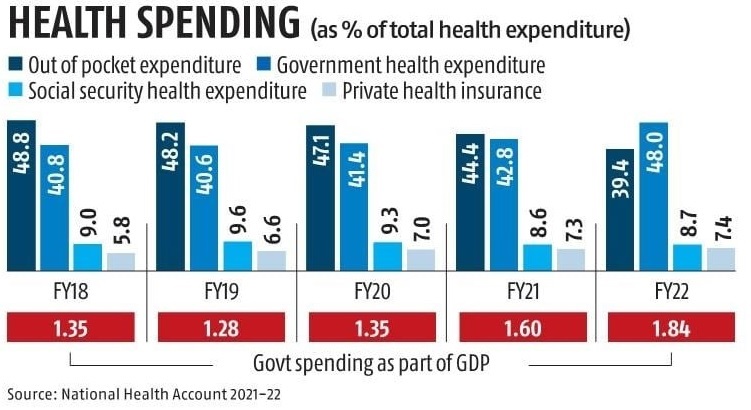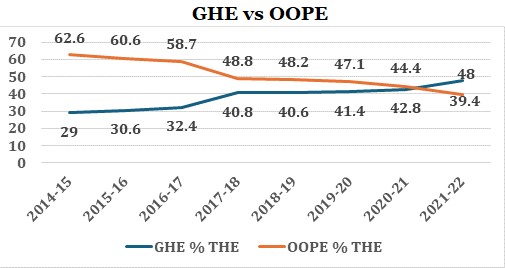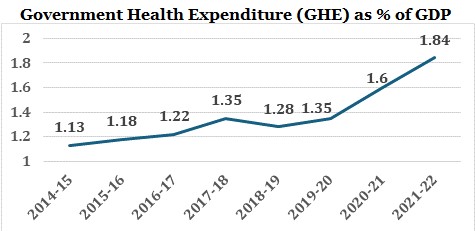The National Health Accounts Estimates for 2020-21 and 2021-22 was released recently by the Union Health Ministry.
|
Total Health Expenditure |
|
|
Government Health Expenditure (GHE)
|
Expenditures from Union Government, State Governments, Rural and Urban Local Bodies including quasi-governmental organisations and donors in case funds are channeled through Government organisations. |
|
Out-of-pocket expenditure (OOPE) |
Expenditures directly made by households at the point of receiving health care. |
|
Social Security Expenditure (SSE)
|
It includes government-funded health insurance (both Center and State) and medical reimbursement to government employees. |
|
Private Health Insurance (PHE)
|
Spending through health insurance companies where households or employers pay a premium to be covered under a specific health plan. |

National Health Policy aims to reduce OOPE as a proportion of total health expenditure to 35 % by financial year 2025-26 (FY26).

|
National Health Account |
|

National Health Policy has targeted 2.5 % of GDP for public health expenditure by 2025.